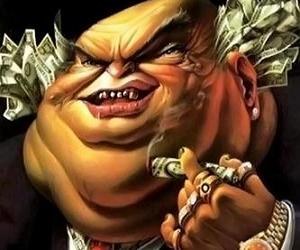 Wind Power: “It is Robin Hood in reverse — taking money from the poorest in order to line the pockets of the richest.” Philip Davies MP, Sunday Post, 2014
Wind Power: “It is Robin Hood in reverse — taking money from the poorest in order to line the pockets of the richest.” Philip Davies MP, Sunday Post, 2014
If we are to rebuild a healthy American economy, Congress must scrap the dead weight in the U.S. Tax Code that is strangling our potential. And I can’t think of a better place to start than eliminating the renewable energy Production Tax Credit that feeds the market-distorting Big Green energy machine. Congressmen Kenny Marchant of Texas and Mike Pompco of Kansas have introduced HR 1901 to do just that.
Begun in 1992 as a TEMPORARY BOOST for green energy innovation, The Production Tax Credit has ballooned into a massive special interest handout for the now multibillion dollar wind industry for which we are currently on the hook for a minimum of $6.4 billion over the next decade.
The Institute for Energy Research tallied the numbers and found that each wind job costs taxpayers $11.45 million and destroys more than 4 jobs in the general economy, because of all the subsidies and the resulting skyrocketing cost of electricity. In fact, on a unit of production basis, wind is subsidized over 52 times more than conventional fossil fuels.
A study, ‘Wind Power Reassessed: A review of the UK wind resource for electricity generation’ confirmed in 2014 that the green energy revolution has been an expensive folly. Wind farms only produce on average, 80% of their potential power output for less than one week a year. Overall, they only manage 90% output for a meagre 17 hours a year, because they are useless in low winds and have to be turned off to prevent damage if the wind speeds are too high.
And, just like solar panels that don’t produce energy in the dark, when the wind is not blowing, there is no power generation and we must rely on back-up energy. The short-fall has to be covered by gas, coal or nuclear!! Instead of replacing conventional generation sources, wind locks us into dependence on fossil fuels. Wind also represents a redundancy (duplication) of sources of electricity which Big Wind CEO Patrick Jenevein admitted “turns taxpayers and consumers into double payers for the same project.”
Contrary to what many think, the cost of both onshore and offshore wind power has not been coming down. On the contrary, it has been going up significantly since the mid-2000s according to the UK Energy Research Center. The costs for a utility scale wind turbine range from about $1.3 million to $2.2 million per MW of nameplate capacity installed. Most of the commercial-scale turbines today are 2 MW in size and cost roughly $3-$4 million. And lets not forget that the typical lifespan of a wind turbine is only 10 to 13 years.
A fascinating 2012 report by George Taylor and Tom Tanton at the American Tradition Institute called “The Hidden Costs of Wind Electricity” asserted that the cost of wind power is significantly understated by the Energy Information Association’s (EIA) numbers. In fact, says Taylor, generating electricity from wind costs triple what it does from natural gas because the numbers from the EIA and wind boosters fail to take into account a host of infrastructure and transmission costs.
First of all, the windiest places are more often far away from where electricity is needed most, so the costs of building transmission lines is high. Second, the wind doesn’t blow all the time, so power utilities have found that in order to balance out the variable load from wind they have to invest in keeping fossil-fuel-burning plants on standby. When those plants are not running at full capacity they are not as efficient. Most calculations of the cost of wind power do not take into account the costs per kWh of keeping fossil plants on standby or running at reduced loads. But they should, because it is a real cost of adding clean, green, wind power to the grid. Crunching the numbers, Taylor found that the true cost of wind power is more like double the advertised numbers. Ouch.
At the 2012 price of natural gas, and before counting any subsidies or transmission costs, consumers are paying about $8.5 billion more per year for electricity from wind than they would have paid if it were gas-fired power and, that doesn’t even include the cost of the direct federal subsidies. What’s more, consumers will have to shoulder that cost for as long as the turbines are in operation. That’s $8.5 billion a year that government is stealing from taxpayers to subsidize a less efficient, more expensive technology.
It’s hard to justify wasting more taxpayer dollars propping up a technology that is bad for our health, less efficient, unreliable, slaughters millions of birds and bats each year, and can’t stand on its own. But, that is exactly what Congress will do because they don’t have a spine and they’re beholden to the fat cats that keep them in power.

